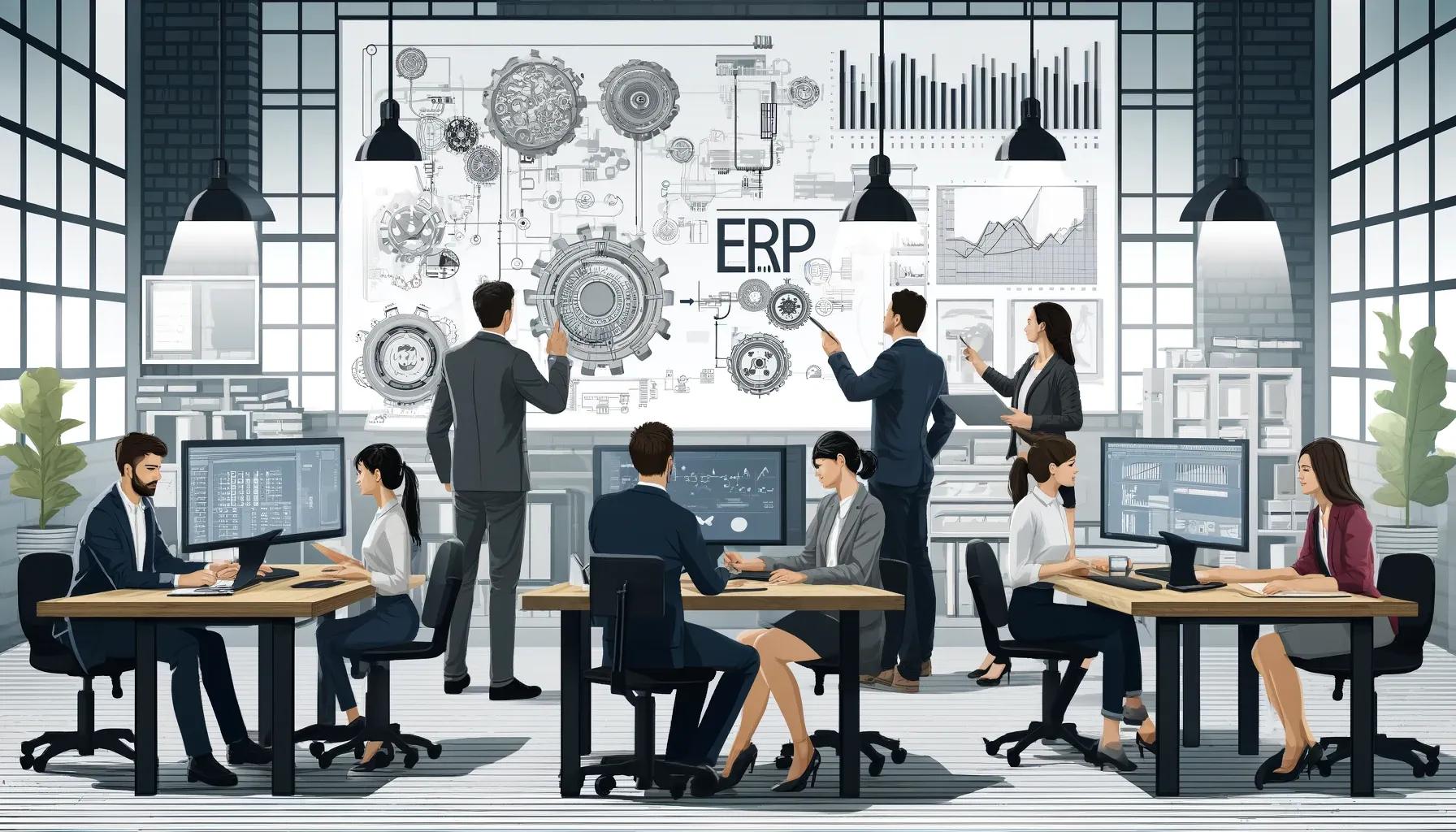Choosing the Path: Legacy Modernization Project or Innovation?
In an era where technology evolves at an unprecedented pace, businesses are perpetually caught in a dilemma: to modernize their existing legacy applications or systems or to embark on greenfield projects that allow for innovation from the ground up. This decision is far from trivial, as it impacts not only the immediate operational capabilities of a business but also its long-term strategic positioning and ability to compete in a digital-first marketplace.
Legacy systems, often seen as the backbone of many established organizations, carry with them the weight of historical data and processes that have been honed over years, if not decades. However, they also pose significant challenges, from compatibility issues with modern technologies to escalating maintenance costs and limitations on agility and scalability. On the other hand, greenfield projects offer a blank canvas, promising the allure of state-of-the-art technology stacks and architecture designed for today’s needs. Yet, they come with their own set of challenges, including substantial initial investments, the uncertainty of untested processes, and the potential for disrupting existing business operations.
The choice between modernizing an existing system and starting anew with a greenfield project is a strategic decision that requires a deep understanding of an organization's current state, its future objectives, and the technology landscape. This article aims to dissect these two paths, offering insights into their benefits, challenges, and the critical factors that should guide this decision. Through comparative analysis, decision-making criteria, and real-world examples, we seek to provide a comprehensive guide to help business leaders and IT professionals make the right choice for their projects, ensuring their organizations' growth and sustainability in the digital age.
Understanding Legacy Systems

Legacy systems are the technological backbone of many organizations, encapsulating decades of business knowledge, processes, and data. However, the term "legacy" often carries connotations of obsolescence, inefficiency, and a technical debt. This section explores the nature of legacy systems, their role in current business operations, and the challenges they present.
Definition and Characteristics
At its core, a legacy system is any software, technology, or application that has become outdated but remains critical to daily operations. These systems were cutting-edge at their inception, perfectly tailored to the business needs and technological standards of their time. Characteristics that define legacy systems include outdated programming languages, reliance on older hardware, and architectures that resist integration with newer technologies.
Role in Business Operations
Despite their age, legacy systems often run critical business processes. They contain invaluable historical data and have been customized over the years to fit unique business requirements. For many organizations, these systems are synonymous with stability and reliability, having supported operations without major failures for years.
Challenges Posed
The challenges of maintaining and operating legacy systems are multifaceted: Technological Incompatibility: Legacy systems frequently struggle to integrate with modern software and platforms, limiting the ability to adopt new technologies or improve business processes.
High Maintenance Costs: As the technologies upon which these systems are built become obsolete, maintenance becomes more complex and expensive, consuming a significant portion of IT budgets.
Skills Shortage: The pool of professionals skilled in older technologies dwindles over time, making it challenging to find support for maintenance and updates.
Innovation Stifling: Legacy systems can become a bottleneck for innovation, as their rigid structures and outdated functionalities make it difficult to implement new features or adapt to changing market demands.
Security Vulnerabilities: Older systems may not comply with current security standards, posing significant risks to data integrity and privacy.
Despite these challenges, the decision to replace or modernize legacy systems is not straightforward. The embedded business logic and data within these systems represent a significant asset, and the cost and risk of migration can be prohibitive. Legacy software modernization strategies must be carefully considered, balancing the need for updated technology with the preservation of critical business functions.
Exploring Greenfield Projects
In contrast to the constraints and challenges of legacy systems, greenfield projects represent an opportunity to build new systems from scratch, free from legacy limitations. This section delves into the definition, advantages, and considerations of embarking on a greenfield project, providing a fresh perspective on technological innovation and implementation.
Definition and Characteristics
A greenfield project refers to the development of a new system, application, or infrastructure without the need to consider any prior work. The term "greenfield" is an analogy to construction on green land, where no demolition or remodeling is required. These projects are characterized by their potential for innovation, adoption of cutting-edge technologies, and designs that are not constrained by existing systems or architectures.
Advantages of Starting from Scratch
Greenfield projects offer several compelling advantages:
- Innovation: It allows organizations to leverage the latest technologies, frameworks, and methodologies, fostering innovation and potentially offering a competitive edge.
- Customization for Current Needs: Projects can be tailored precisely to current business needs and future scalability, without the need to accommodate outdated processes or technologies.
- Efficiency and Performance: Built with modern technologies, greenfield systems can offer improved efficiency, performance, and user experiences compared to aging legacy systems.
- Enhanced Security: Implementing the latest security standards from the ground up can significantly reduce vulnerabilities and enhance data protection.
When to Consider a Greenfield Approach
Deciding to initiate a greenfield project is significant and should be based on several factors:
- Business Transformation: When an organization undergoes a major shift in strategy, market focus, or operational model, starting fresh with new systems may align better with new business objectives.
- Technological Obsolescence: In cases where legacy systems are so outdated that maintenance becomes impractical or impossible, building anew might be the only viable option.
- New Product or Service Lines: Launching entirely new offerings that require capabilities not supported by existing systems can necessitate greenfield development.
Challenges and Considerations
While greenfield projects offer many advantages, they come with their own set of challenges:
- Significant Investment: The initial cost and resource investment can be substantial, with no immediate return on investment during the development phase.
- Risk of Scope Creep: Without the constraints of existing systems, greenfield projects may suffer from scope creep, where the project expands beyond its original objectives, timeline, and budget.
- Integration with Existing Ecosystems: Even new projects may need to interact with existing systems, requiring careful planning for integration and data migration. Greenfield projects represent a bold move towards modernization and innovation, offering organizations the chance to leapfrog technological limitations and align more closely with current and future business needs. However, the decision to go greenfield should be weighed against the strategic goals, financial considerations, and potential risks involved.
Comparative Analysis: Modernization vs. Greenfield
When faced with the decision to innovate technologically, businesses often find themselves at a crossroads: modernize their existing legacy systems or embark on greenfield projects. This comparative analysis aims to dissect the primary considerations of each approach, including costs, timeframe, risks, and potential impacts on business operations and growth, providing a clearer perspective for decision-makers.
Costs
- Modernization: Often perceived as cost-effective in the short term, modernizing existing systems can reduce the need for significant upfront investment. However, hidden costs can arise from complexities in untangling and reworking deeply integrated legacy code and processes.
- Greenfield: Although requiring a higher initial investment, greenfield projects may offer better long-term value. The total cost of ownership can be lower due to improved efficiency, lower maintenance costs, and the avoidance of legacy system pitfalls.
Timeframe
- Modernization: Depending on the scope, modernization projects can be quicker to implement, especially when incrementally upgrading parts of a system. However, extensive modernization might take as long as greenfield projects if significant restructuring is necessary.
- Greenfield: Typically requires more time upfront for planning, development, and testing. The lack of existing constraints allows for a more thorough design phase, which can lead to longer project timelines but potentially smoother deployment and adoption phases.
Risks
- Modernization: Risks include potentially underestimating the complexity of existing systems, leading to project delays and budget overruns. There's also the risk of business disruption during the transition period.
- Greenfield: Higher initial risks due to the uncertainties of working with new technologies and processes. However, these projects often have clearer risk management plans, as they are not constrained by existing system vulnerabilities.
Business Operations and Growth
- Modernization: Allows businesses to retain their operational continuity and leverage existing data and processes. It can be a strategic choice for companies looking to gradually enhance their technological capabilities without disrupting current operations.
- Greenfield: Offers the opportunity to radically transform business operations, enabling more agile, efficient, and scalable processes. This approach can significantly propel growth, particularly for businesses looking to break away from outdated models and embrace digital innovation fully.
Sector-Specific Considerations
- The choice between modernization and greenfield projects can also depend on industry-specific factors. For instance, highly regulated industries like finance and healthcare may prefer modernization to ensure compliance, while tech or start-up sectors might lean towards greenfield projects to capitalize on cutting-edge technologies and innovation.
Recommendations
Deciding between modernizing a legacy system and initiating a greenfield project requires a nuanced understanding of an organization's current technological landscape, strategic goals, and market dynamics. Factors such as the company's risk tolerance, the state of its existing technology infrastructure, and its future business objectives should guide this decision.
A hybrid approach, combining elements of both modernization and greenfield strategies, might be the best path for some organizations. This could involve modernizing core components of the legacy system while developing new functionalities or modules from scratch.
Decision-Making Criteria

Choosing between legacy system modernization strategies and embarking on a greenfield project is a pivotal decision for any organization. This section outlines the key criteria and frameworks that can aid in making this strategic choice, ensuring alignment with the organization's technological capabilities, financial health, operational needs, and strategic goals.
Technological Compatibility and Future-Proofing
- Assessment of Current Systems: Evaluate the extent to which existing systems meet current and projected business needs. Consider the flexibility, scalability, and integration capabilities of current technologies.
- Future-Proofing: Determine if the chosen path allows for easy adoption of emerging technologies. Greenfield projects often offer a clean slate for future-proofing, while modernization must be carefully planned to not replicate past limitations.
Financial Considerations
- Cost-Benefit Analysis: Conduct a thorough cost-benefit analysis, considering not only the immediate financial implications but also long-term operational costs and potential ROI. Greenfield projects may require significant upfront investment but could offer lower total cost of ownership and higher long-term value.
- Funding and Budget Constraints: Understand the organization’s financial capacity for large-scale IT projects. Modernization might be more feasible for tight budgets, allowing for incremental investments over time.
Operational Impact and Business Continuity
- Minimizing Disruption: Consider the operational impact of each approach. Modernization can be less disruptive to daily operations, especially if done incrementally. Greenfield projects, while potentially offering superior results, may require a period of adjustment and training.
- Business Continuity: Ensure that the chosen approach supports uninterrupted business operations. Plan for data migration, system integration, and user training to minimize downtime.
Strategic Alignment and Market Competitiveness
- Alignment with Business Strategy: The decision should be in line with the organization’s strategic goals, whether it's to enter new markets, offer new services, or improve operational efficiency.
- Competitive Advantage: Evaluate how each option positions the company against competitors. Greenfield projects can provide a competitive edge through the adoption of the latest technologies and business models.
Frameworks and Models for Decision-Making
- SWOT Analysis (Strengths, Weaknesses, Opportunities, Threats): Apply a SWOT analysis to understand the internal and external factors that could impact the success of modernization or greenfield projects.
- ROI Calculation: Use return on investment calculations to estimate the financial return of each option, taking into account both tangible and intangible benefits.
- Gap Analysis: Conduct a gap analysis to identify the differences between the current state and the desired future state, helping to clarify whether modernization or a greenfield approach is more suitable.
Implementing the Decision
Once the decision is made, it’s crucial to:
Develop a Clear Roadmap: Outline the steps, milestones, and KPIs to guide the project.
Engage Stakeholders: Ensure buy-in from all stakeholders, including leadership, IT staff, and end-users.
Plan for Change Management: Implement a robust change management strategy to support the organization through the transition, addressing training needs, and communication plans.
Our System Modernization Case Study
Examining real-world examples provides valuable insights into the practical implications of deciding between legacy application modernization and greenfield projects. This section sheds light on best practices and gained insight.
Case Study 1: Modernizing Legacy System in the Manufacturing Sector

Background
Our client, a leader in electronic equipment repairs, relied on a legacy system to manage its production, repair processes, inventory, and supply chain operations. While functional, the legacy system had become outdated, inefficient, and incapable of meeting the company's growing demands. It lacked scalability, real-time data processing capabilities, and integration with modern technologies, hindering operational efficiency and decision-making. Recognizing the need for a significant upgrade, our client embarked on a modernization initiative to enhance its competitiveness and operational efficiency.
Approach
Our client adopted a systematic approach to modernize its legacy system:
1. Assessment and Analysis
- Conducted a comprehensive assessment of the existing legacy system to identify its limitations and areas for improvement.
- Engaged with key stakeholders to gather insights and requirements for the new system.
2. Technology Evaluation
- Evaluated various modern technologies and platforms suitable for the electronic equipment repair industry.
- Considered cloud-based solutions, specialized repair management software, and real-time monitoring systems.
3. Strategic Planning
- Developed a strategic roadmap for modernization based on the assessment and technology evaluation.
- Outlined a phased approach to migrate from the legacy system to the new solution while minimizing disruption to ongoing operations.
4. Implementation
- Commenced the implementation phase, which involved data migration, software development or customization, integration with existing systems, and extensive testing to ensure reliability and performance.
- Designed the new system to streamline repair processes, optimize inventory management, and improve supply chain visibility.
5. Training and Change Management
- Provided employees with comprehensive training to familiarize them with the new tools and processes.
- Implemented change management strategies to facilitate a smooth transition to the new system.
Outcome
The modernization of the legacy system resulted in significant benefits:
1. Ongoing Operation
- The company was able to continue operations without much disturbance.
- The new system streamlined repair processes and enhanced resource utilization, leading to improved operational efficiency.
2. Scalability and Flexibility
- The modernized system was designed to scale with the company's growth and adapt to evolving technologies, providing greater flexibility and agility in future software modernization and development.
3. Competitive Advantage
- By modernizing its IT infrastructure, our client strengthened its competitive position in the electronic equipment repair industry, expanding its market share.
Gained Insight
Several key lessons emerged from the modernization project:
1. Technology Alignment
- Choosing technology solutions that align with the specific requirements and workflows of the electronic equipment repair industry is essential for successful modernization.
2. Change Management Strategy
- Effective communication and training are vital to ensure smooth adoption of new technologies and processes by employees.
3. Continuous Innovation
- Modernization is an ongoing process, and our client must continue to innovate and adapt to keep up with business needs.
Case Study 2: Greenfield Project - Developing an ERP System for a Manufacturing Company

Background
Our customer, a mid-sized company specializing in industrial equipment, faced significant operational challenges due to disparate legacy systems for inventory, production, sales, and finance. The company decided to develop a comprehensive ERP (Enterprise Resource Planning) system from scratch to streamline operations, improve efficiency, and support growth.
Challenges
- Fragmented Systems: Existing systems were isolated, leading to inefficiencies and errors in data transfer between departments.
- Manual Processes: Many processes were manual, resulting in delays and increased risk of human error.
- Scalability Issues: The current systems could not scale to meet the company's growth ambitions.
- Data Inconsistency: Inconsistent data across systems made it difficult to generate accurate reports and forecasts.
Solution
Our client embarked on a greenfield project to develop a modern ERP system tailored to their specific needs. The project involved the following key steps:
1. Requirements Analysis and Planning
- Conducted workshops with stakeholders from all departments to gather detailed requirements.
- Defined clear project goals, timelines, and budget.
- Selected a technology stack that included cloud-native solutions, microservices architecture, and modern development frameworks.
2. System Design and Architecture
- Designed an integrated system architecture to ensure seamless data flow across all modules (inventory, production, sales, finance, and HR).
- Implemented a microservices architecture to ensure scalability and flexibility.
- Ensured data integrity and consistency with a centralized database.
3. Agile Development Methodology
- Adopted agile practices, including iterative development cycles and continuous feedback loops.
- Established cross-functional teams to foster collaboration and ensure all requirements were addressed.
4. User-Centric Design
- Engaged end-users throughout the development process to ensure the system met their needs.
- Conducted usability testing and incorporated feedback to enhance user experience.
5. Integration and Automation
- Automated workflows to reduce manual intervention and improve efficiency.
- Integrated the ERP system with existing tools and external systems for seamless operations.
6. Training and Change Management
- Developed comprehensive training programs for employees.
- Implemented change management strategies to facilitate a smooth transition to the new system.
Outcome
- Operational Efficiency: The new ERP system streamlined operations, significantly reducing manual processes and errors.
- Improved Data Accuracy: Centralized data management led to consistent and accurate data, enabling better decision-making.
- Scalability: The microservices architecture allowed the system to scale with the company's growth.
- Cost Savings: Automation and improved efficiency resulted in substantial cost savings.
- Enhanced Reporting: Real-time data and advanced analytics provided valuable insights, helping management make informed decisions.
Gained Insight
- Stakeholder Involvement: Continuous engagement with stakeholders was crucial for understanding needs and ensuring the system met business requirements.
- Agile Methodology: Agile practices enabled flexibility and allowed the project team to adapt to changes and feedback effectively.
- User Training: Comprehensive training and support were essential for successful adoption of the new system.
- Scalable Architecture: Designing a scalable system from the outset ensured that the ERP could grow with the company.
Conclusion
The technological landscape of today presents businesses with challenging decisions that can significantly impact their future growth and competitiveness. Choosing between modernizing legacy applications or systems and initiating greenfield projects is one such decision that requires careful consideration and strategic planning. Throughout this article, we've explored the definitions, advantages, challenges, and decision-making criteria for both paths, supplemented by real-world case studies that illustrate the tangible outcomes of these choices.
Legacy systems modernization pros and cons
Pros:
- Less business analysis is needed since the purpose and functionality of the system are easier to grasp.
- Lower initial expenses.
- Allows for hiring fewer software developers compared to starting a project from scratch.
- Modernizing the system occurs in stages, allowing for implementation with minimal disruption, reducing potential downtime and productivity losses.
- Employees find it easier to adopt a modernized system than to learn how to use an entirely new one.
Cons:
- System modernization can be compared to archeology in its approach to uncovering and revitalizing artifacts of the past, albeit in a technological context.
- Integrating modernized systems with existing legacy systems or third-party applications can present compatibility issues and interoperability challenges.
- Migrating data from legacy systems to modern platforms can be complex and time-consuming, with the risk of data loss, corruption, or inconsistency if not executed properly.
Overall, while legacy systems modernization offers numerous benefits, organizations must carefully weigh the pros and cons and develop a comprehensive strategy to mitigate risks and maximize the success of the modernization initiative.
Greenfield pros and cons
Pros:
- Flexibility and Freedom: Greenfield projects start with a clean slate, allowing organizations to design and implement systems, processes, and infrastructure from scratch without being constrained by existing legacy systems or structures. 2.** Innovation and Customization**: Organizations have the opportunity to innovate and customize solutions tailored specifically to their unique needs and requirements, incorporating the latest technologies and best practices.
- Optimized Efficiency: With no existing infrastructure to work around, greenfield projects can be designed for optimal efficiency, minimizing unnecessary complexities, redundancies, and inefficiencies that may exist in legacy systems.
- Scalability: Greenfield projects are typically designed with scalability in mind, allowing organizations to easily accommodate future growth and expansion without the limitations imposed by legacy systems.
- Reduced Technical Debt: Since greenfield projects involve building new systems and infrastructure, organizations can avoid the accumulation of technical debt associated with maintaining and updating legacy systems over time.
Cons:
- High Initial Costs: Greenfield projects often require significant upfront investment in terms of resources, time, and capital expenditures to build infrastructure, develop systems, and establish operations from scratch.
- Longer Time to Market: Building new systems and infrastructure from scratch can take longer than modernizing existing systems, delaying time to market and potentially putting organizations at a competitive disadvantage.
- Higher Risk: Greenfield projects entail higher risk compared to modernization efforts, as there is greater uncertainty and complexity involved in building new systems and infrastructure without the benefit of existing frameworks or precedents.
- Lack of Historical Data: Without existing data or historical insights to inform decision-making, organizations may face challenges in accurately forecasting demand, identifying market trends, and making informed strategic decisions.
- Resource Intensive: Greenfield projects require significant human and financial resources to plan, execute, and manage effectively, placing strain on organizational resources and potentially diverting attention from other strategic priorities.
- Integration Challenges: Integrating new greenfield systems with existing legacy systems or third-party applications can be complex and challenging, requiring careful planning and coordination to ensure seamless interoperability.
Key Takeaways
 Strategic Alignment: Deciding between legacy system modernization approaches and greenfield projects should be guided by the organization's strategic goals, operational needs, and market positioning.
Strategic Alignment: Deciding between legacy system modernization approaches and greenfield projects should be guided by the organization's strategic goals, operational needs, and market positioning.
Comprehensive Analysis: A thorough analysis involving technological compatibility, financial implications, operational impact, and future-proofing is crucial for making an informed decision.
Risk and Reward: Both paths come with their own sets of risks and rewards. Modernization efforts can offer a quicker, potentially less disruptive path to improvement, while greenfield projects can pave the way for radical innovation and transformation.
Flexibility and Incremental Approaches: Sometimes, a hybrid approach that combines elements of both modernization and greenfield strategies can offer a balanced solution, leveraging existing investments while driving innovation.
Engagement and Change Management: Success in either path requires active engagement from all stakeholders and a comprehensive change management strategy to ensure smooth transition and adoption.
Moving Forward
As technology continues to evolve, the decision to modernize or start anew will remain a pivotal one for businesses. It's a decision that demands not only a deep understanding of one's current technological infrastructure and business objectives but also a visionary outlook towards future capabilities and market demands. Engaging with IT professionals, consultants, and stakeholders to navigate this decision-making process can provide valuable insights and ensure that the chosen path aligns with the broader goals of the organization.
Final Thoughts
In the journey toward digital transformation and technological excellence, there are no one-size-fits-all solutions. Each organization's unique circumstances, from its industry landscape to its internal capabilities and market ambitions, will dictate the best course of action. By carefully weighing the options, considering the insights and best practices outlined in this article, businesses can make informed decisions that not only address their immediate challenges but also set them up for success in the digital era.



